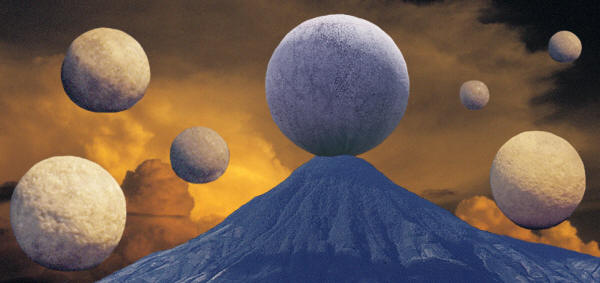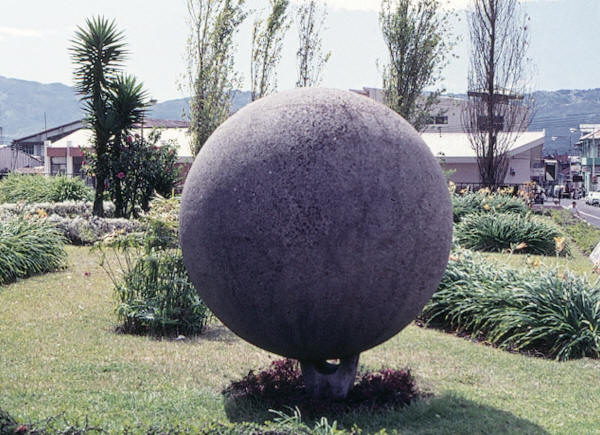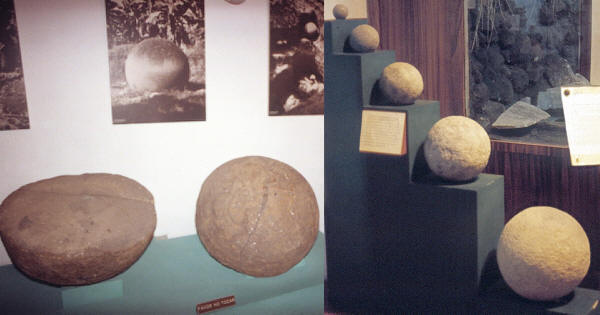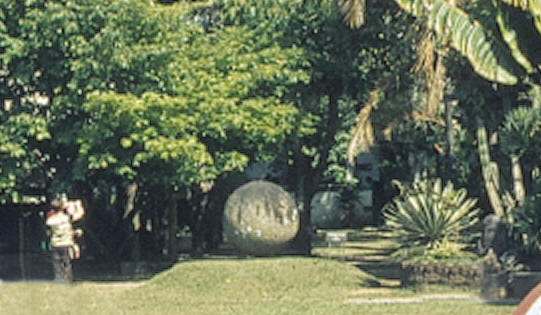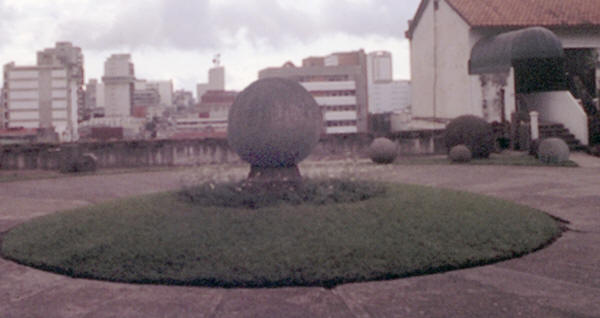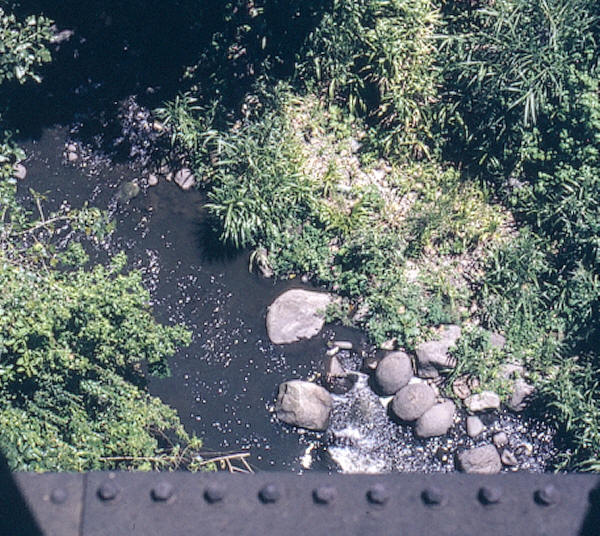|
||
|
||
|
"The outstanding feature
of the Terraba plain (In southwestern
Costa Rica) consists of sites of
solid stone balls of various sizes."--------1943,
Doris Stone, "A Preliminary Investigation Of The Flood Plain Of The
Rio Grande De Terraba, Costa Rica" American Antiquity, A Quarterly
Review Of American Archaeology, Vol. 9, No.1, p. 75.
For many years now, Costa Rica's stone spheres have been a wonderful subject for writers of the strange and mysterious. They really do have a mystical look about them and bring to mind props left over from a sci-fi movie set. Written accounts of their strange and baffling qualities far outnumber all the scientific reports that's been written. But actually, quite a lot has been learned about the round balls since Doris Stone's description of them in 1943. The first discoveries of stone spheres appear in the late 1930's in southern Costa Rica. Land clearing activities by the United Fruit Company for a banana plantation began to uncover large numbers of them. Stone (1943) reported fourteen stone balls associated with one mound. They have been referred to as stone spheres, stone balls, petro-spheres, and locally as los bolas. |
||
|
||
|
Stone spheres have been discovered on thirty-four archaeological sites in Costa Rica and one in Panama, at Paso Canoas, near the border (Fernandez 2003). They were not manufactured in one place but in several neighboring locations. At least 300 stone spheres have been recorded, but it's believed many more remain in the ground. Most of them have been moved to locations all over Costa Rica and to other countries, which has made it all the more difficult to identify their cultural frame of reference. Their image has become an icon of Costa Rica and a desirable artifact for landscaping and tourist attractions. |
||
|
||
|
Stone spheres were made in a wide assortment of different sizes. Their measurements vary from less than a foot to at least 8.4 feet (2.57 m) in diameter. The largest stone ball is located at El Silencio. They were made by skilled craftsmen using stone tools, in a similar way the giant moai on Easter Island and the colossal Olmec stone heads were made. The stone was shaped with the use of hammerstones by pecking and hammering away the surface. The process then involved grinding to varying degrees of smoothness with stone or grit and water. Most of the spheres were made from either gabbro (chemically equivalent to plutonic basalt), granodiorite (similar to granite), and limestone. |
||
|
||
|
Much has been written about the uncanny symmetry of the stones. But there is a considerable difference in their level of quality and craftsmanship. Hoopes has written that no one has made the effort, which would be considerable, to measure the stones more accurately than to the centimeter. He also mentions that Lothrop's measurements, that are calculated in meters to four decimal points, are mathematically calculated estimates and not direct measurements, which may be confusing some authors. Stone spheres that measure between two and three feet can be as much as two inches out of round. Many of the stones are also damaged from natural and manmade fires and from agricultural and other earth moving machinery. |
||
|
||
|
The original meaning of the stone spheres has been lost in time. But images of circles and representations of spheres have been used by cultures around the world for thousands of years to represent important cultural ideas. One basic concept is that the image of a circle can represent a sphere and a sphere can represent many two dimensional planes of a circle. Both circle and sphere have their sacred center. These round images sometimes connect with cosmological and ancestral ideas rather than representing the earth as a globe. For example, they can be seen on old coins in areas where a spherical earth was unknown. Spherical concepts often represent the earth as the center, around which all celestial bodies rotate. Another perspective is related in a Lakota Indian story. It describes the delivery of the sacred pipe by the wakan holy woman. She takes from the bundle a pipe but also a small round stone that she says represents the earth, grandmother and mother. In Black Elk's account of the sacred pipe, he says, " This round rock, which is made of the same red stone as the bowl of the pipe, your Father Wakan-Tanka (the Great Spirit) has also given to you. It is the Earth, your Grandmother and Mother, and is where you will live and increase." |
||
|
||
|
The spheres of Costa Rica are simple in form and their eloquent shape is impressive to look at. The considerable effort it took to make them suggests they were meant to convey an important cultural idea. Probably in the form of a mythic story. They may be symbols of the cosmic universe and the sacred center or even representations of ancestral lineage. But it's likely that their true meaning may never be known and authors will still be writing about their strange and baffling qualities for many years to come. |
||
|
"REFERENCES"
1943, Stone, Doris, "A Preliminary
Investigation Of The Flood Plain Of The Rio Grande De Terraba, Costa
Rica" American Antiquity, A Quarterly
Review Of American Archaeology, Vol. 9, No.1. |
||
